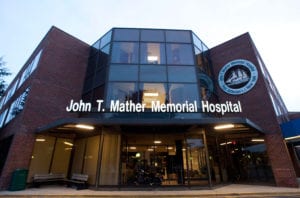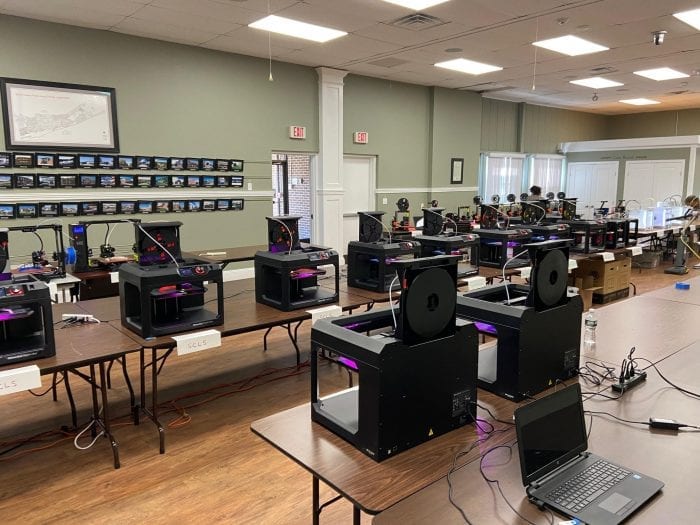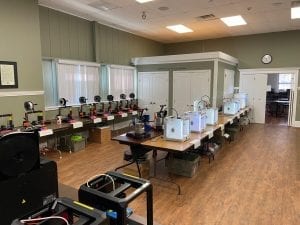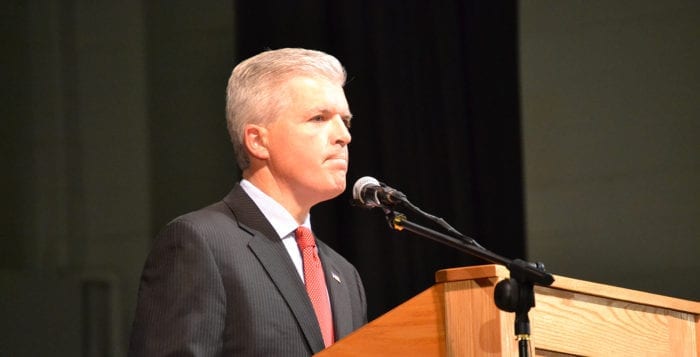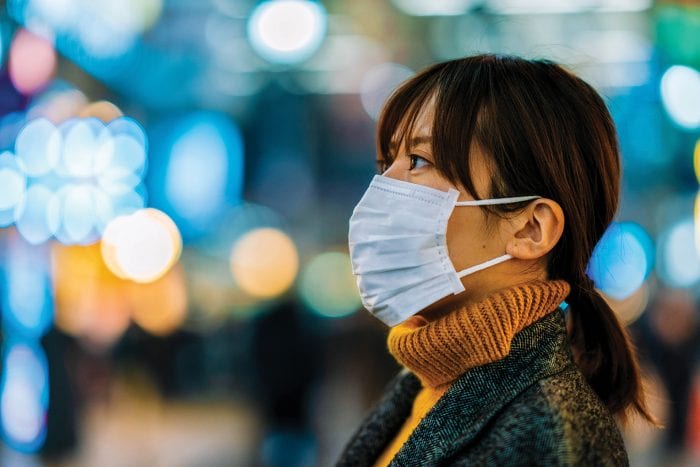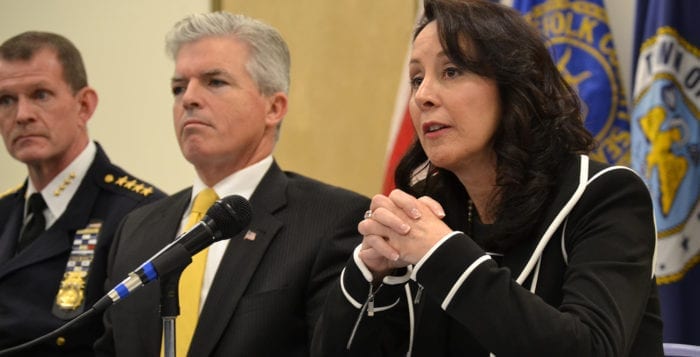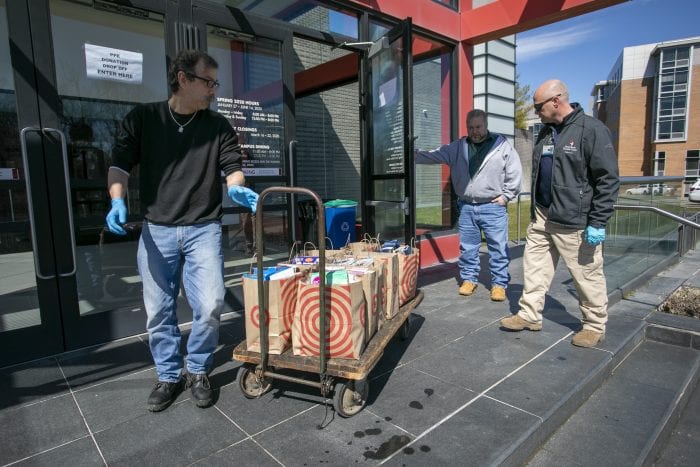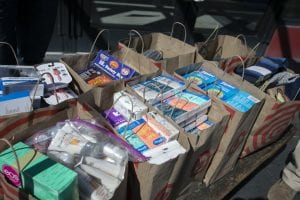During challenging times like these, the Comsewogue School District reacted to be fully prepared to not only provide and keep its classes and academic standards at a high level but also to keep the students’ social and emotional well-being stable despite no longer being in the school buildings.
The administration, staff, students and community saw fit to have educational packets and more in place while the upper grades were provided with Chromebooks and resources online available before school was closed. The technology department was in close contact and continues to be communicating with everyone on a daily basis with updates and more.
“I was happy to receive additional training available up to the very last day,” said Camie Zale, a special education teacher.
“Teachers and students are comfortable with using technology and communicating with various websites and apps on a normal basis,” said Andrew Harris, a teacher at the middle and high school. “Unfortunately, I’m nowhere as savvy as most of these students who have grown up with this technology. If I ever have any problem, I can ask any of my students who usually solve it in a matter of seconds … they are amazing.”
Don Heberer, district administrator for instructional technology, said the 1:1 take-home Chromebook program in the high school and classroom carts at John F. Kennedy Middle School had allowed students and teachers to become comfortable with using the technology for education.
Melissa McMullan, a sixth-grade teacher in the middle school, said the school did a great job getting Chromebooks into kids’ hands. The process, she said, has been tricky to find what works and what doesn’t on an online space.
“The kids and I will solve the need for distance learning together like we always do,” she said.
Students in the elementary schools have grade-level packets posted online along with hard copies sent home. The district is also providing support to both teachers and parents remotely on using the technology.
”Comsewogue has always prided itself on being innovative and willing to try something new,” Heberer said. “We know that it will be a challenging change for everyone; however, Comsewogue staff has worked hard to provide the students, teachers and community resources during this period.”
The Comsewogue district has taken to online as well for interteacher-related processes. Harris said teachers received a message from the Pupil Personnel Services department that they will hold upcoming annual meetings on Google Hangouts as part of their annual review process. It has taken time and effort but he feels he has become comfortable and “up to speed” with the various programs.
“For me, I am learning as I go,” Harris said. “The first day I mostly communicated the way I was most familiar with — I picked up the phone and called most parents to let them know what was going on with their child’s education. From there I switched to text messages, and finally have been using Google Classroom and more as I get better.”
After checking in with several of the students, Harris said many teachers realized they were perhaps giving too much work. One parent communicated that her daughter was working from early morning until about 5 p.m. on her assignments and starting to stress out.
“I think many of the teachers didn’t want the students to feel like they were on vacation and get complacent,” said Joe Caltagirone, a teacher at the high school.
Harris said he wanted his very first assignment to be something light and be beneficial to his students and their families. He posted a YouTube video on how to do Box Breathing, a technique of taking slow, deep breaths to relieve some stress and help concentrate.
“I know people are highly stressed so I asked that the student watch this video first,” Harris said. “I also requested that they teach members of their family how to do it. I know from experience when you teach others you become very proficient at what you’re teaching. I asked them all to comment on how it made them feel.”
Harris, also a yoga instructor, said that breath work is easy to learn and perhaps the best thing people can do in these stressful situations.
Having said all of this, there are many in the Comsewogue community that may not be as comfortable as students are with technology, though there are many people willing to help distribute food and other resources to our senior citizens.
“The problem is that they may not know that there is help out there. Where many of us can easily access social media sites, many of these seniors don’t have the ability to do so,” said Ed Garboski of the Port Jefferson Station/Terryville Civic Association.
“Currently, I’m trying to find a way to bridge that gap,” said Harris. “We are trying to put together an electronic way to have our students write letters to the senior citizens who are being quarantined at local facilities. If we have to, we will have the letters printed and distributed to those seniors directly or through the facility’s printer, so they are not compromised.”
Superintendent Jennifer Quinn stated that the whole staff is committed to doing whatever is necessary to make sure the students continue to get everything they need to have a great education, and much more.
Information and quotes provided by Andrew Harris
Comsewogue Won’t Be Stopped by COVID-19
By Deniz Yildirim
Like the rest of New York, Comsewogue School District is facing unprecedented challenges with courage and teamwork. Following Gov. Andrew Cuomo’s (D) orders, all six of the district’s schools were closed on Monday, March 16, for a tentative two-week period. Administrators and teachers worked hard to create packets and uploaded countless resources onto the district’s website so students can continue their education at home.
Preparing work for over 5,000 students with numerous and distinct needs such as learning disabilities and language barriers could only be completed with hard work and collaboration. Reading teachers, English as second language teachers, teaching assistants and even special area teachers like music teacher Ellen Rios came together to create comprehensive packets that were sent home with students on Friday, March 13. Parents could come in person to pick them up if their child wasn’t in school to get it themselves.
Superintendent Jennifer Quinn has been regularly calling parents with updates and also informed families that the district is even willing to lend out its Chromebooks to students who couldn’t otherwise access the online learning tools.
“This is a scary time for everyone and our students’ health comes first. We want to share what we have to make them feel safe and help them continue to learn,” said Quinn. “Families are advised to call the district so they can prepare the appropriate materials and ensure a smooth and sanitary pick up.
In addition to student work, Comsewogue is continuously posting statements on its website (in English and Spanish) in order to keep families informed. One such notice comes from Robert Pearl, the district’s new administrator for Pupil Personnel Services and Micheala Finlay-Essig, the assistant director of PPS; they have been rescheduling important meetings regarding student services that will now be “teleconferencing” meetings through Google Meet. The instructional technology department led by Don Heberer has never been more critical and everyone can testify to the key role they are playing.
“We’re here to help our students, teachers and community,” Heberer said. “We have been supporting our teachers through technology professional development, so the teachers can support our students’ learning. We are updating the district website and mobile app daily to keep our community informed and provide vital resources.”
Comsewogue graduate, parent and now teacher Kristina Fowler said she’s never been prouder of her community. Fowler has a unique perspective because she’s been in everyone’s shoes, so it’s particularly meaningful to hear her say that Comsewogue is going above and beyond her expectations. She supports her two sons, fourth-grader Kingston and second-grader Miles and lets them “play” with their friends via FaceTime. Most recently, Kingston and Kristina helped classmate Liam Schneph with a question he had about his new hamster.
“It’s so important to stay connected and let kids be kids,” she said. “Comsewogue won’t be stopped by COVID-19.”
Deniz Yildirim is a librarian at the Terryville Road Elementary School
